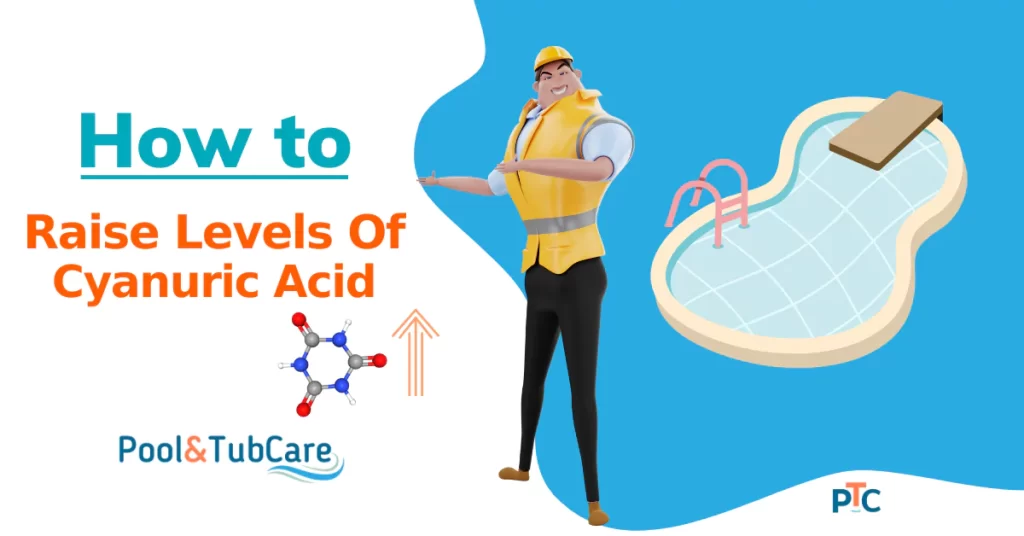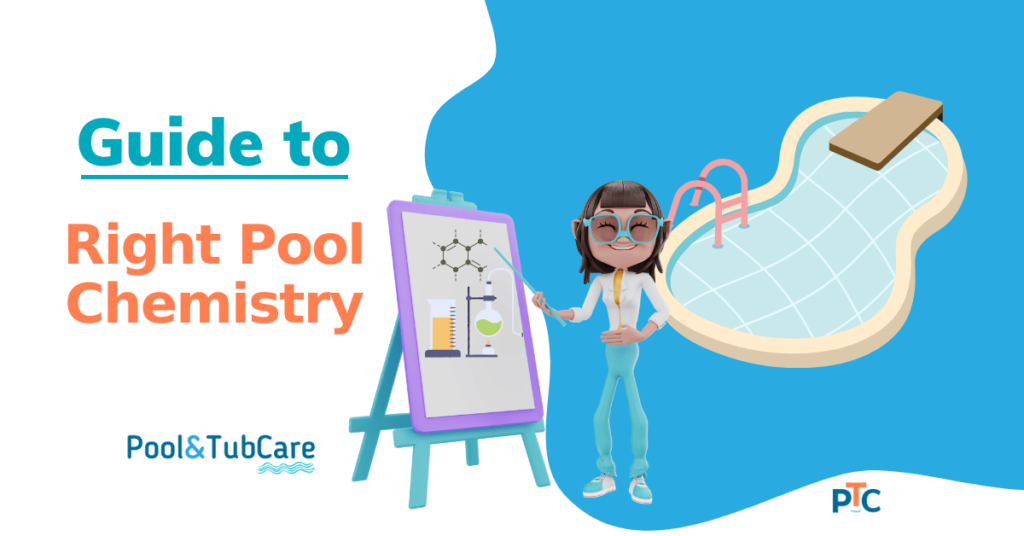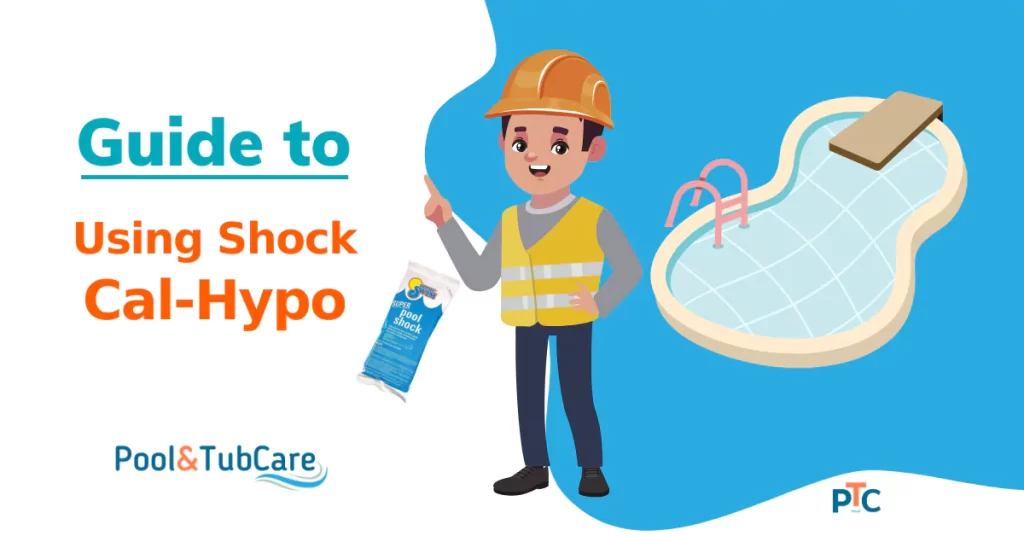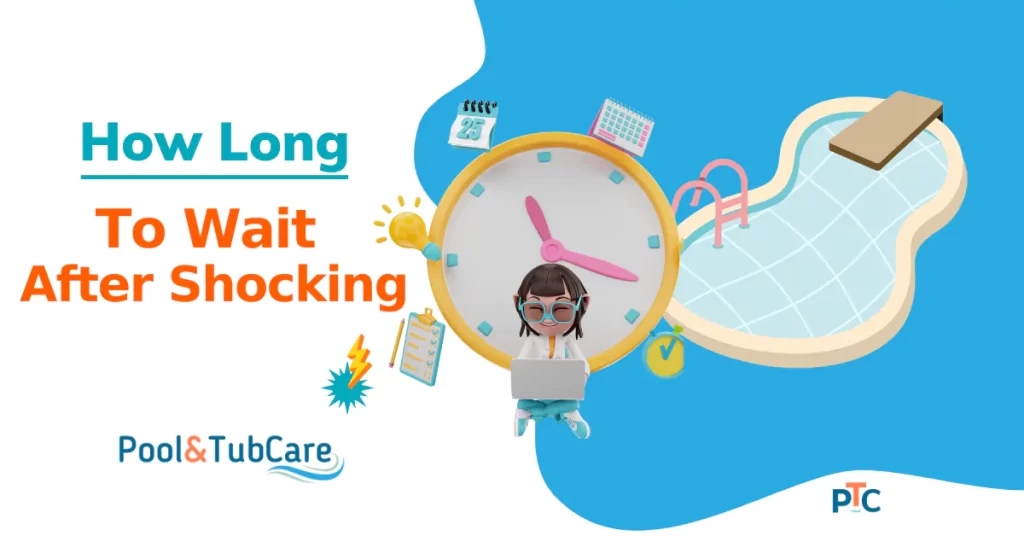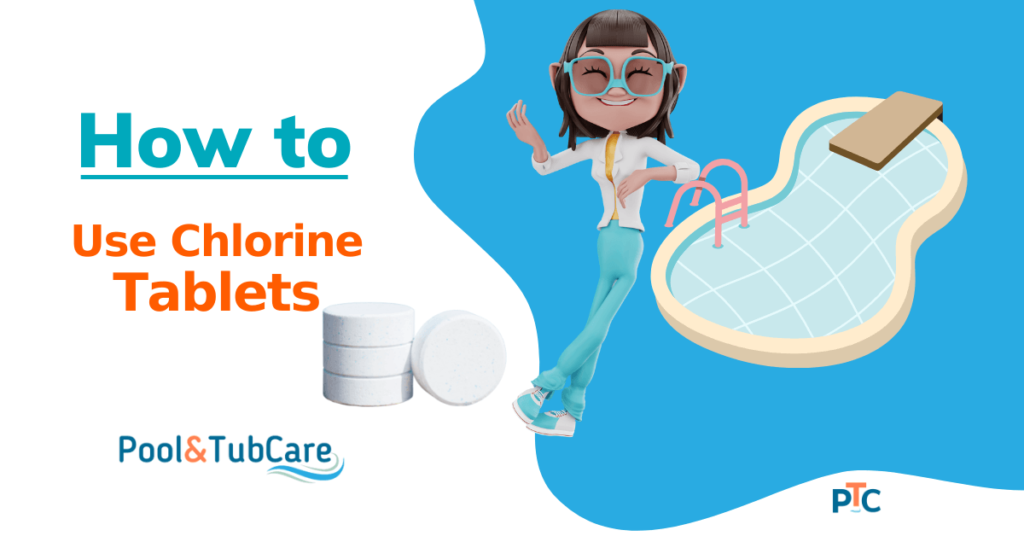Cyanuric acid (CYA) is a stabilizer that binds to chlorine and protects it from sunlight. Without CYA, UV rays can break down 50 to 70% chlorine within two hours.
Cyanuric acid protects chlorine from UV light and increases its lifespan from a few hours to 3 to 5 days. If the levels of cyanuric acid are low (less than 30 ppm), the chlorine will get broken down, and your pool will not be sanitized effectively.
You can easily increase levels of cyanuric acid by adding the pool stabilizer (cyanuric acid) chemical that comes in powder form. You can also raise CYA levels by using stabilized chlorine, such as tablets and sodium dichlor/trichlor, for sanitizing your pool water.
Read on to know why CYA levels are low and how to increase cyanuric acid in pool quickly.
Optimal Levels of Cyanuric Acid
Maintaining the right amount of cyanuric acid is important as too less, or too much of it, can leave your chlorine ineffective.
The ideal levels of CYA in your pool are 30 to 50 ppm. In recent times experts believe that, in fact, more than the amount of CYA, it is the ratio of CYA to chlorine that is more important.
Free chlorine available in pool water should be around 7.5% of CYA.
Here is the table for reference to maintaining chlorine levels in your pool according to CYA levels.
| CYA Levels | Cl Need |
|---|---|
| 10 ppm | 0.75 ppm |
| 20 ppm | 1.50 ppm |
| 30 ppm | 2.25 ppm |
| 40 ppm | 3.00 ppm |
| 50 ppm | 3.75 ppm |
What Kind of Pools Need Cyanuric Acid
As cyanuric acid protects chlorine from sunlight, it is essential only for pools that get direct sunlight.
You won’t require cyanuric acid for indoor pools or pools with significantly less or no sunlight. If you use CYA for such pools, its levels will go up over time as it does not break down on its own.
For this reason, stabilized tablets or chlorine is not recommended for indoor pools. Only use chlorine without CYA in indoor pools.
However, some indoor pools that get UV light exposure will require low doses of CYA.
Saltwater pools are also basically chlorine pools where the final sanitizer is chlorine only, so they also need CYA if they are outdoor.
So, you don’t have to worry about low cyanuric acid levels if you have an indoor pool. Just use unstabilized chlorine for regular sanitization.
What Cause Low Cyanuric Acid Levels
The main reason for low CYA levels can be that you just filled up your pool with fresh water, and it does not contain any CYA.
Another reason might be that you are using unstabilized chlorine, such as liquid chlorine or calcium hypochlorite, for sanitizing your pool. As this type of chlorine does not contain cyanuric acid, you need to add it separately for outdoor pools.
Stabilized chlorine products such as tablets and sodium dichlor/ trichlor already come with CYA, and you don’t need to add it separately.
Another reason for low CYA is diluted water, which may occur due to heavy rains or if you refilled some of your pool water.
What Happens if Cyanuric Acid Levels are Too Low
Cyanuric acid is an important chemical for balanced pool chemistry. If the levels of CYA are lower than 30 ppm, many things can happen in your pool that you don’t want to happen:
Ineffective Chlorine
The worst thing is that without cyanuric acid, chlorine in your pool gets dissipated in hours, and there is nothing left to fight bacteria and algae.
So in an outdoor pool with direct sunlight and without CYA, if you do not add chlorine daily, your pool becomes a hotbed for microorganisms. This will lead to many health problems for swimmers.
Chlorine Utilization and Cost
As your pool without CYA will burn chlorine 5 times faster than a pool with CYA, you need to put more chlorine in your pool to maintain proper sanitization.
Chlorine life becomes 3 to 5 days with cyanuric acid as it protects it from sunlight, so you will save a lot of money if you start using CYA in your pool.
Algae Growth
Chlorine is an effective algae killer, it kills the algae as soon as it comes in contact with it. If the levels of chlorine are not enough in your pool, the algae will start growing.
In no time, your pool will turn into a green pond if not checked with chlorine shock and regular sanitization.
Imbalance Water Chemistry
Loss of chlorine increase the water pollutants as not enough free chlorine is available. Due to the build-up of these waste products in a series of events, many chemicals become unbalanced.
The alkalinity and pH levels can also get a hit.
How to Increase Cyanuric Acid in Pool Quickly
There are only two methods to increase cyanuric acid levels in your pool water.
One is to add pure cyanuric acid that comes in the name of a stabilizer or conditioner. Another method is to use stabilized chlorine, such as tablets and sodium dichlor/trichlor.
Before adding any chemical, measure the exact levels of CYA in your pool with test strips or liquid kits.
You need to know the initial reading of CYA in the pool and pool water volume so that you know how much chemical to add to your pool.
Add chemicals in a phased manner, and don’t add too much in one go. It will be much harder to lower the CYA levels if you overshoot above the limit.
Add half the recommended amount and measure the levels after circulating water for a few hours. Add more if the desired levels are not reached.
Use Stabilized Chlorine
If you have been using unstabilized chlorine, such as liquid chlorine, for your pool chlorine needs, it will be a good option to shift to the stabilized chlorine option.
Stabilized chlorine comes with CYA, and you don’t need to add it separately.
If you are going to add 3 ppm chlorine via stabilized trichlor tablets, you will be adding around 1.75 ppm of cyanuric acid to the pool.
While the chlorine will break down, the cyanuric acid will stay in the pool, and over time, it will increase.
So, if you decide to use chlorine tablets or stabilized granules for regular sanitization, keep a tab on CYA levels so that they don’t shoot above 50 ppm. If they start reaching 50 ppm, shift back to unstabilized chlorine.
How to do it:
- If you are going to use tablets, you can use either floater, add to a skimmer basket or use automated chlorine dispensers as detailed here.
- For using granules, you first need to dissolve them in a bucket and add them to the pool on the sides. Take care that no granules are going in the water on corners as they can damage walls.
- Circulate the water and measure both chlorine and CYA levels.
Add Pure Cyanuric Acid (Stabilizer or Conditioner)
If you want to raise cyanuric acid to a specific level, then adding the pure form of CYA is the best option.
You can easily find this chemical at pool stores or online as a pool conditioner or stabilizer.
You can calculate how much chemical your pool needs to reach between 30 to 50 ppm levels.
On average, you will need 13 ounces or 0.81 pounds of pure cyanuric acid to increase ppm by 10 for a 10,000-gallon water pool.
Note: Don’t add all the chemicals you calculated in one go. Add half first, circulate water for a few hours and test CYA levels before adding more.
How to do it:
- Cyanuric acid is an acid, so wear protective gear like goggles and gloves before handling it.
- Add the measured amount to a bucket of half or a quarter of warm water and mix the chemicals properly.
- Add water first to the bucket and not chemicals, as that may cause fumes and splashes.
- Add the mix to the skimmer and let water circulate for a few hours.
- Test the water again and add more if required.
Note: Do not add CYA directly to your pool plaster of the vinyl line, as they are very susceptible to it.
If you somehow shoot over the limit of 50 ppm despite taking precautions, you need to refill a part of the pool with fresh water to reduce the cyanuric acid levels. Here is a detailed guide on lowering CYA levels.
Keep Cyanuric Acid Levels Up for Proper Chlorine Function
Cyanuric acid is a must for the effectiveness of chlorine in outdoor pools. You need to maintain proper levels of CYA between 30 and 50 ppm so that it can protect chlorine from UV radiation.
If your pool CYA levels are lower than 30 ppm, you can increase them easily by adding pure cyanuric acid or stabilized chlorine.
Keep a tab on those CYA levels to save money on your chlorine consumption, and keep your pool clean for taking a happy dip.
FAQs about Raising Cyanuric Acid Levels
Here are a few frequently asked questions.
Does baking soda raise cyanuric acid in a pool?
No baking soda does not increase the CYA levels in the pool. They are independent chemicals that perform the different functions of increasing alkalinity and protecting chlorine.
Does shock raise cyanuric acid?
Yes and No. It depends on the type of shock you use. If you use a stabilized shock, it will increase the CYA levels, but if you use an unstabilized shock like cal-hypo, it will not increase the cyanuric acid levels.
However, we recommend using non-stabilized shocks so as to not raise CYA levels very high, as you will be adding a large amount of chemicals to shock the pool.
Will low cyanuric acid make the pool cloudy?
Yes, a pool with low CYA levels will have less amount of chlorine to effectively sanitize the pool, which may lead to much-unwanted growth and cloudiness.
Is it safe to swim in a pool with low cyanuric acid levels?
No, a pool with low cyanuric acid will not be clean as not enough free chlorine is available to do the job. Many microorganisms like bacteria and algae can grow in such water, which might be dangerous for swimmers.
Is chlorine stabilizer the same as cyanuric acid?
Yes, chlorine stabilizer and chlorine conditioner are both names for cyanuric acid in the pool industry. They are also referred to as pool stabilizer or pool conditioner.
Do I add chlorine or stabilizer first?
If you add chlorine before the stabilizer, it will get burned by sunlight. So it is important to first increase the cyanuric acid levels to 30 to 50 ppm levels and then adjust chlorine levels.

